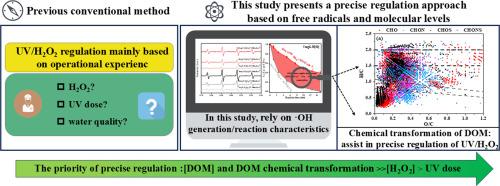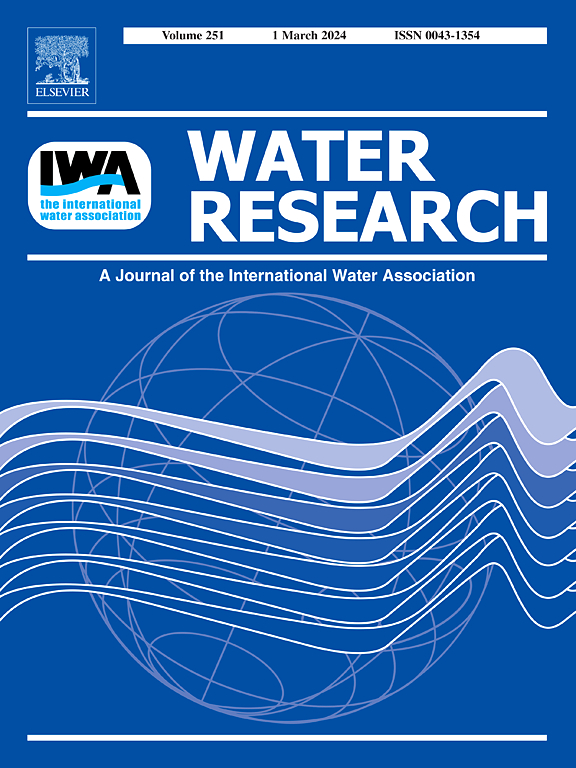Precise Regulation of UV/H2O2 Processes: •OH generation/reaction and DOM transformation as the main free radical scavenger
IF 11.4
1区 环境科学与生态学
Q1 ENGINEERING, ENVIRONMENTAL
引用次数: 0
Abstract
The widespread application of UV/H2O2 is limited by the empirical operational practices, which can lead to excessive energy, chemical input and the generation of uncontrollable by-products. This study presents a precise regulation approach based on the characteristics of free radical generation/reaction and the chemical transformation of organics, assessed through a pilot experiment. The findings indicated that increasing H2O2 dosage was more effective than increasing UV dose in enhancing •OH generation and pollutant removal. As the H2O2 dosage and UV dose increased, the relative influence of water quality on pollutant removal gradually diminished. Dissolved organic matter (DOM) in the water quality background accounted for the largest proportion of •OH scavenging (76.4%) and the most complex component. Moreover, changes in operating conditions were accompanied by the uncontrollable production of low-molecular-weight (LMW) DOM. Fourier transform ion cyclotron resonance mass spectrometry (FT-ICR MS) revealed the chemical transformation of LMW DOM at the molecular level. Higher H₂O₂ dosages triggered more extensive oxidative degradation, resulting in more complex effluent compositions. Considering treatment efficiency, energy consumption, and effluent product composition, H₂O₂ dosages of 5–10 mg/L and UV doses of 350–450 mJ/cm² were identified as optimal. This research contributes to the efficient purification of organic micropollutants in water using UV/H2O2 technology with low energy consumption, minimal chemical input, and relatively controllable by-products.

求助全文
约1分钟内获得全文
求助全文
来源期刊

Water Research
环境科学-工程:环境
CiteScore
20.80
自引率
9.40%
发文量
1307
审稿时长
38 days
期刊介绍:
Water Research, along with its open access companion journal Water Research X, serves as a platform for publishing original research papers covering various aspects of the science and technology related to the anthropogenic water cycle, water quality, and its management worldwide. The audience targeted by the journal comprises biologists, chemical engineers, chemists, civil engineers, environmental engineers, limnologists, and microbiologists. The scope of the journal include:
•Treatment processes for water and wastewaters (municipal, agricultural, industrial, and on-site treatment), including resource recovery and residuals management;
•Urban hydrology including sewer systems, stormwater management, and green infrastructure;
•Drinking water treatment and distribution;
•Potable and non-potable water reuse;
•Sanitation, public health, and risk assessment;
•Anaerobic digestion, solid and hazardous waste management, including source characterization and the effects and control of leachates and gaseous emissions;
•Contaminants (chemical, microbial, anthropogenic particles such as nanoparticles or microplastics) and related water quality sensing, monitoring, fate, and assessment;
•Anthropogenic impacts on inland, tidal, coastal and urban waters, focusing on surface and ground waters, and point and non-point sources of pollution;
•Environmental restoration, linked to surface water, groundwater and groundwater remediation;
•Analysis of the interfaces between sediments and water, and between water and atmosphere, focusing specifically on anthropogenic impacts;
•Mathematical modelling, systems analysis, machine learning, and beneficial use of big data related to the anthropogenic water cycle;
•Socio-economic, policy, and regulations studies.
 求助内容:
求助内容: 应助结果提醒方式:
应助结果提醒方式:


